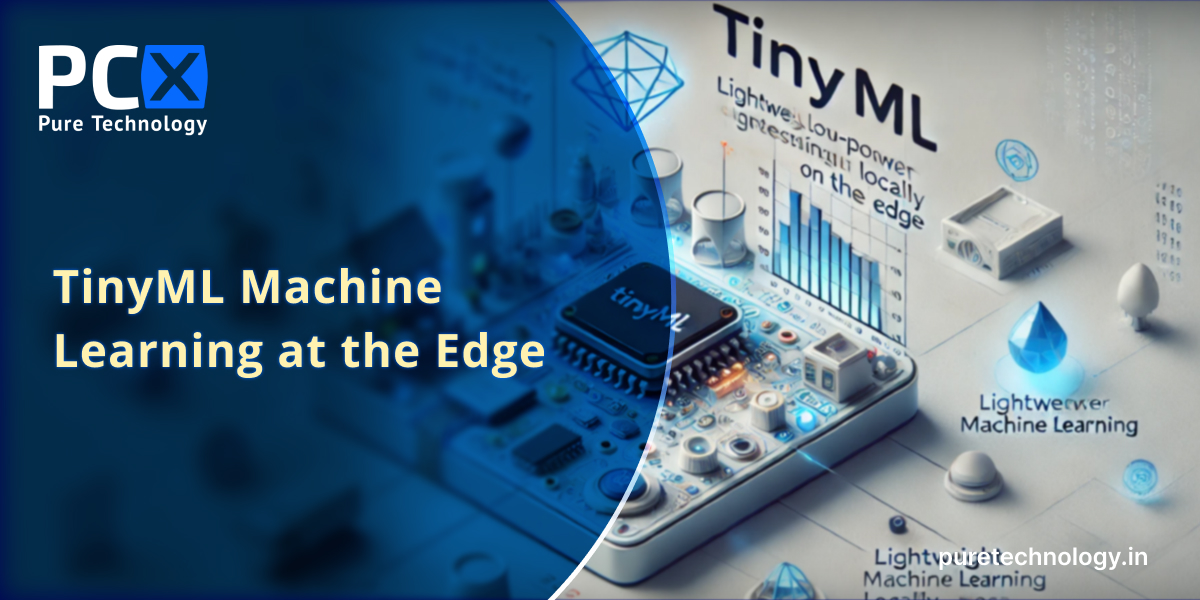TinyML: Machine Learning at the Edge
Introduction
As the Internet of Things (IoT) expands, there is a growing need for on-device intelligence. TinyML is revolutionizing this space by enabling machine learning on low-power, edge devices, bringing AI closer to the data source.
By running models locally, TinyML reduces latency, enhances privacy, and lowers energy consumption, making it a game-changer for smart devices and IoT applications.
What is TinyML?
TinyML (Tiny Machine Learning) refers to deploying machine learning models on small, resource-constrained devices such as microcontrollers, sensors, and IoT devices.
Key features include:
- Low-power consumption suitable for battery-operated devices
- Real-time data processing without cloud dependency
- Small model sizes optimized for edge computing
- Offline operation enhancing privacy and security
Why TinyML Matters
Traditional ML models rely heavily on cloud infrastructure, which can cause:
- High latency for real-time applications
- Increased data transfer and associated costs
- Privacy and security concerns
TinyML addresses these challenges by enabling on-device intelligence, providing immediate insights and action while maintaining energy efficiency.
Key Strategies for Implementing TinyML
- Optimize Models for Edge Devices
Use model compression, quantization, and pruning techniques to reduce size without losing accuracy. - Select Appropriate Hardware
Choose microcontrollers and edge devices capable of running TinyML efficiently, such as ARM Cortex-M or ESP32. - Leverage Edge ML Frameworks
Utilize frameworks like TensorFlow Lite for Microcontrollers, Edge Impulse, or PyTorch Mobile for building and deploying models. - Implement Data Preprocessing at the Edge
Process raw sensor data locally to minimize bandwidth and enhance real-time decision-making. - Monitor and Update Models Remotely
Ensure models can be updated over-the-air (OTA) to adapt to new data and changing environments.
Benefits of TinyML
- Real-Time Insights: Immediate processing on edge devices enables faster decision-making.
- Reduced Energy Consumption: Low-power models make battery-operated devices more efficient.
- Enhanced Privacy and Security: Data stays on the device, reducing exposure to breaches.
- Scalability: Edge deployment reduces reliance on cloud infrastructure for large-scale IoT networks.
Challenges & How to Overcome Them
TinyML deployment faces challenges such as limited device memory, computational constraints, and model optimization complexity. To overcome these:
- Use efficient algorithms and lightweight models
- Optimize memory usage and processing with edge-specific techniques
- Test models extensively on target hardware before deployment
Conclusion
TinyML is bringing the power of machine learning to the edge, enabling smarter, faster, and more energy-efficient IoT devices. By optimizing models for low-power hardware and processing data locally, organizations can unlock new possibilities in real-time AI, privacy-preserving applications, and connected devices.
Adopting TinyML today is a critical step toward a future where intelligence is everywhere, right at the edge.
Call us for a professional consultation












Leave a Reply